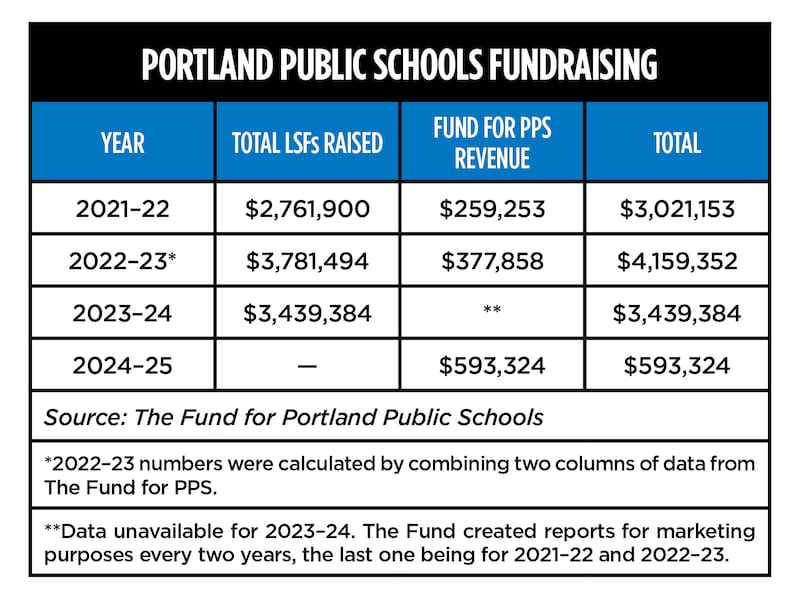New fundraising numbers indicate Portland parents didn’t take kindly to a lesson in sharing.
In May 2024, the Portland School Board voted to shift Portland Public Schools’ fundraising system. Under PPS’s old model, parents at individual schools raised money through local school foundations, or LSFs, which could fund extra staffing positions at a foundation’s school. To foster equity, LSFs were required to contribute one-third of revenue after the first $10,000 to the PPS Parent Fund, which then distributed that money to at-need schools throughout the district using demographic data.
But the fundraising method was deeply controversial (“Paddles Down,” WW, May 24, 2023). Parent advocates who disliked LSFs said the schools that benefited most were often much wealthier and whiter than PPS’s average demographics. They were backed up by district data: schools that raised the most followed those trends. But parents who supported LSFs said the district had a lot to lose by stripping schools of parent contributions, and little to gain.
Numbers released late last week bear that warning out. The Fund for Portland Public Schools raised just $593,324 last academic year, dramatically less than LSFs raised the previous year (see table).
Another statistic worth noting: Just 12% of contributions to The Fund for PPS, or about $71,000, came from individual donors. Translation: Parents have pretty much stopped giving.
“It takes an extraordinary amount of people and effort to raise $2 to $3 million in individual donations,” says School Board member Virginia La Forte, the ex officio board member of The Fund for PPS for the 2025–26 academic year. (La Forte is a new member of the School Board and so but did not have a say in the switch in fundraising.) “The mistake PPS made was not involving them in The Fund’s creation and initial strategy,” she adds. “My experience has been that they are highly engaged, generous with their time and donations, and loved that their fundraising supported the PPS Parent Fund. I hope we can course-correct and fully reengage them in this important community-building work.”
At a Tuesday night meeting, Deborah Kafoury, the district’s chief of staff, clarified that PPS had engaged some foundation parents as they planned the new system. “We talked to a lot of the former foundations,” she said. “But i think engaging them as a whole in terms of what the new structure could look like would be beneficial.”
To the credit of parents who pushed for equity, The Fund’s investments in the 2025–26 school year are more evenly distributed throughout the district. A parent committee allocated $660,000 to high-impact tutoring for K–3 students, $70,000 to math support for ninth and 10th graders, and $200,000 to food pantries in 20 community schools, among other investments. But those investments mean the fund spent more than it drew in this past year: $1.4 million.
This story has been updated to clarify that data backed up the equity concerns of parents against the former fundraising model. It also clarifies that PPS made efforts to engage some foundation parents.


